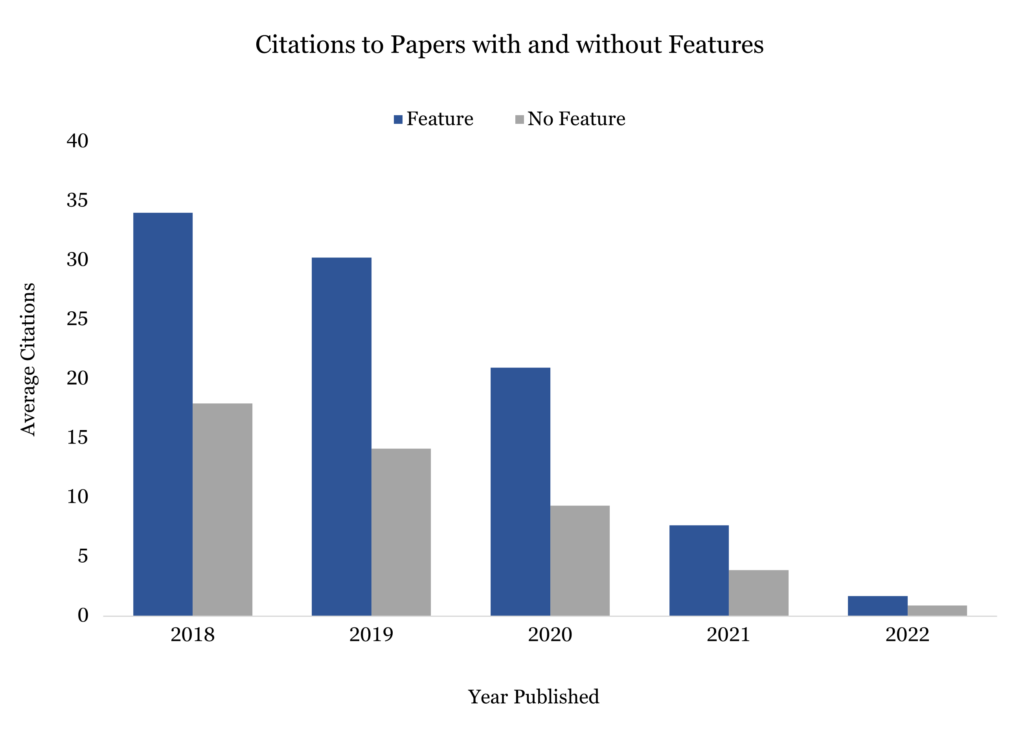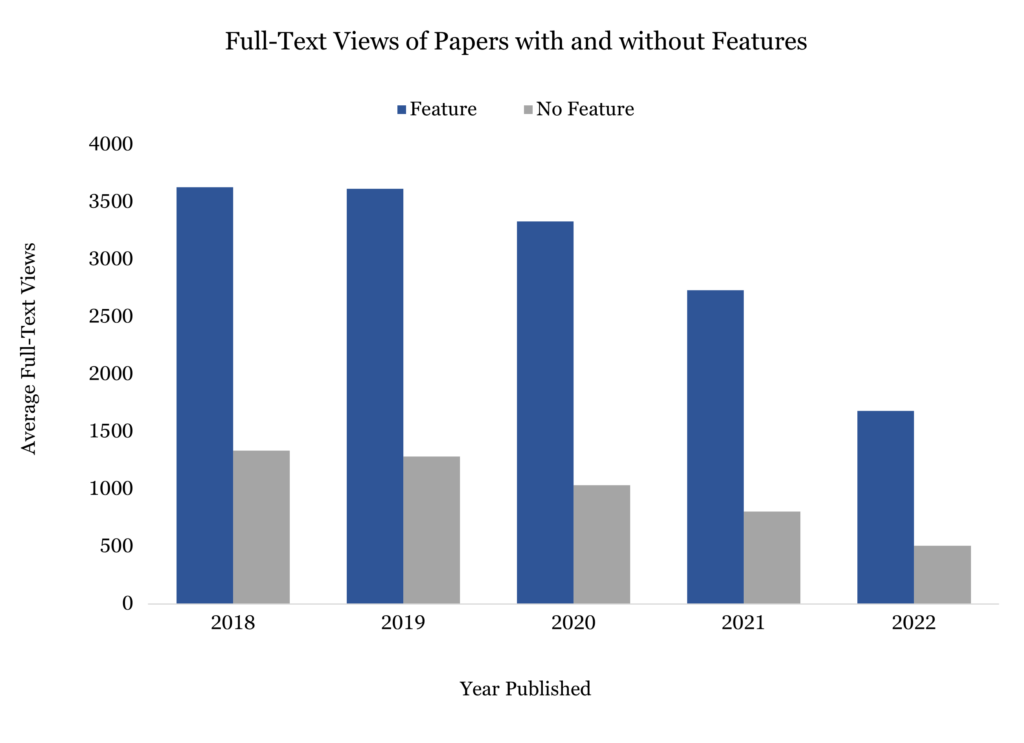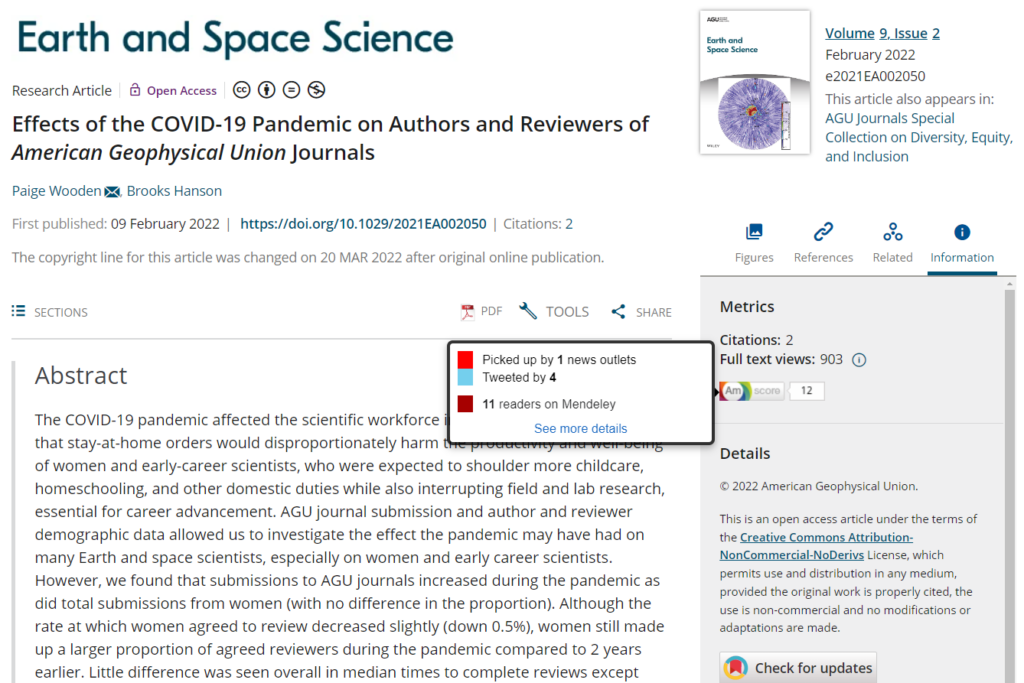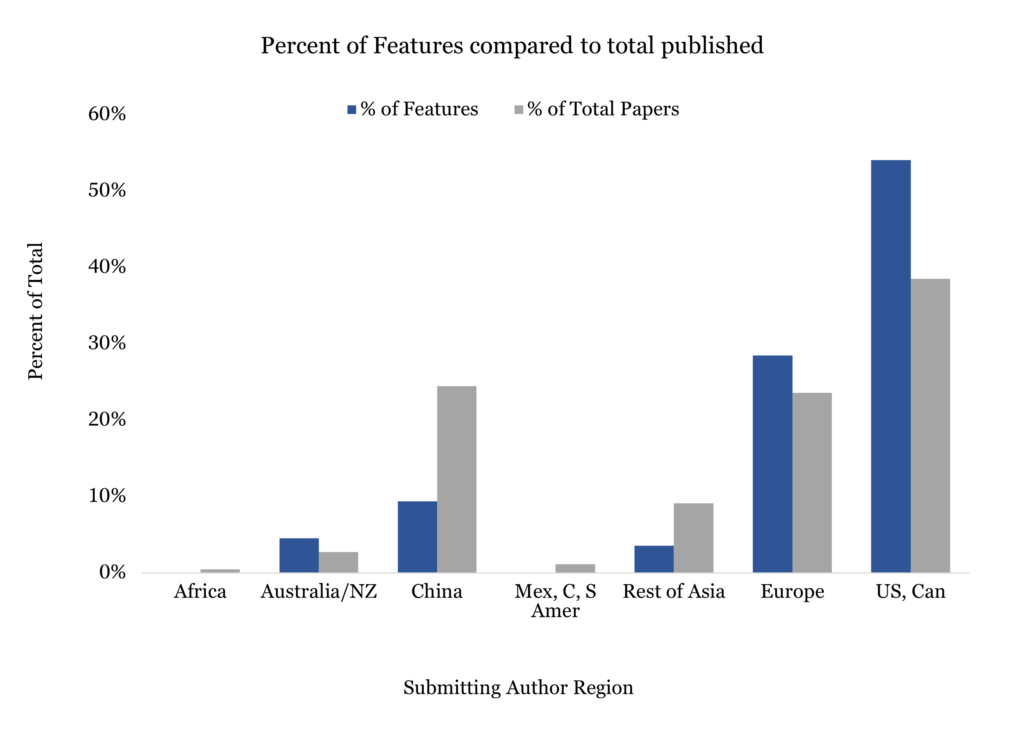Editors’ Vox is a blog from AGU’s Publications Department.
With the sheer amount of scholarly content produced each day, it has never been more important to draw attention to important peer reviewed research results. However, not all publishers have the resources in-house for promotional activities, pushing the burden onto authors with little support.
In addition to providing many resources for authors to share their work, the American Geophysical Union (AGU) has a robust system for selecting and promoting the most interesting and impactful research published in our 23 scientific journals and 3 books series.
Types of promotion
AGU’s mission of advancing discovery in Earth and space sciences and its benefit for humanity can’t be achieved if we don’t explain and share the research results published in our journals and books. Though all results published contribute to the scientific record, editors select some exciting papers to promote beyond the journal pages. Specifically, AGU publishes the following types of features:
- Research Spotlight — A 500-word feature summarizing significant results of the top articles published in AGU journals. Spotlights tell the story of the research and its application to important scientific questions and societal issues. Spotlights are prepared by a science writer and published in Eos, AGU’s online science news magazine.
- Editor’s Highlight — A 6-8 sentence, plain language description of an article written by the handling editor or associate editor and published in Eos. Highlights draw attention to innovative methods or exciting findings that may also interest researchers/scientists immediately outside the scientific field.
- Social Media — A 1-2 sentence summary of the article with an accompanying figure, intended for the broader scientific community. Social media posts are prepared by AGU staff and shared on AGU’s general social media channels and/or relevant journal accounts or subject-specific feeds.
- Press Releases – A full press release of exceptional or news-worthy scientific findings intended for the science media. These are written by AGU’s Media Team, often in collaboration with the author’s institution.
AGU also guarantees a feature for any article accepted in our leading journals Reviews of Geophysics, AGU Advances, and Community Science, as well as all of our books.
What is promoted and what is the impact?
Since 2018, between 300 and 400 articles annually have been featured in the form of an Editor’s Highlight, Research Spotlight, Editor’s Vox, press release, social media, or other kind of feature. Of the articles that were promoted in 2022, 45% were Editor’s Highlights, 35% Research Spotlights, 13% press releases, and 7% Editor’s Vox pieces.
When it comes to selecting articles for promotion, our editors consider a wide range of factors. Maggie Xenopoulos, Editor in Chief, JGR: Biogeosciences, explains that in addition to articles that are highly influential in their fields or of great scientific importance to an interdisciplinary readership, she and her editors also select some more interesting and international articles:
We will also promote topics that we perceive as “cool” or “hip” and are unusual or unique for the journal (earthly lava tubes, bat guano, beavers, and moose anyone?). Finally, we have a soft spot for articles from underrepresented regions, that we profile as a means to increase submissions from those areas.
What might be even more important than the research itself is how the authors communicate that research to the editors. A well-written Plain Language Summary (PLS) can catch an editor’s eye and inspire the editor to request promotion simply because it provides a clear and concise summary of the research.
Impact of articles with a special feature
While we can track the number of pageviews of online features, we also try to measure the impact on the research article itself as a result of being featured by AGU. We have three different ways of measuring, in each case comparing papers that were featured with those that were not featured.
The first measure is how many citations a paper has received. Articles with a feature published in 2018 and 2019 received on average 15 more citations than articles without a feature (Figure 1). 2020 articles with a feature received about 11 citations more than those without. Since citations take time to appear in publications, it’s too early to make any meaningful comment on the data for articles from 2021 and 2022.

The second measure is the number of full-text views, which is the number of times an article is accessed online. Articles with a feature receive on average over 2000 more full-text views than those without:

The third measure of impact is an article’s Altmetric Attention score, which counts different types of online attention such as mentions in tweets, blog articles, news articles, and other social media platforms. Articles with an AGU feature have on average 80 points higher Altmetric scores than those without. An article’s Altmetric score can be found on the article page via the Information tab on the right side, along with citations and full-text view counts:

What and who is AGU promoting?
AGU picks research that is innovative, interesting, or newsworthy for features. We also feature science from underrepresented regions. For example, a recent Research Spotlight explains carbon and nitrogen sources by season in the Toscantins basin near the Amazon River.
Some features are translated to reach broader audiences. A feature on lava lake levels at a volcano in Democratic Republic of Congo was translated into French. A feature on tracking heavy metal accumulation in the Nile Delta was translated into both French and Arabic. All of our translated features and additional translated content is showcased on our Eos pages in Chinese, Spanish, Arabic, French.
In spite of our efforts to showcase international research, we’re still featuring a disproportionate percentage of articles whose submitting authors are from Europe and the United States compared to the total number of articles published from those regions (Figure 4). This just means we have opportunities to expand the diversity of the articles selected for a feature.

We also like to celebrate the work of early career scientists such as this Editor’s Highlight on fracturing and flow of carbon dioxide and water in quartz from graduate student Filip Simeski.
Furthermore, we are also drawing attention to research that directly addresses the U.N. Sustainable Development Goals (SDGs) by adding an icon at the bottom of the feature. For examples How to Build a Climate-Resilient Water Supply and Fine-Tuning Air Pollution Models.
What can YOU do?
Even if an article doesn’t get selected by an editor to be promoted by AGU, there are lots of things authors can do to promote their work. In fact, word of mouth and sharing with the people who are most interested in the research is a highly effective way to give wings to research results. Here are our recommendations to help boost an article’s viewership and impact:
- Include a Plain Language Summary in the article, even if it’s not required for the journal. Here’s a great guide for writing an effective Plain Language Summary.
- Utilize Kudos, a free web-service to share published research in plain language on a stylish page– making it easier for wider audiences to understand. Learn about Kudos and its benefits in this recorded webinar.
- Share work on social media using #AGUpubs. Social media channels are an excellent way to reach the broader scientific community, especially early-career researchers. Check out AGU’s webpage on how to best use accounts with specific guides on Twitter, Instagram, Facebook, and more.
- Tell the institutional press office about newly accepted articles. They are usually eager to share research from their scientists.
- Submit a Publicity Request to AGU’s press office about articles that are particularly newsworthy (e.g., trending topics, research with potentially broad interest) or are slated to be publicized by the authors’ institutions. Our press team will provide extra consideration about promoting the research.
- Register for an ORCID, which increases discovery of published works. Other important benefits of having an ORCID are described in the link above.
- Upload your article to ResearchGate, which broadens the reach and discoverability of AGU articles.
So much time and effort go into the research, writing, and revision process that authors might not want to think about the article once it’s published. But this is a very important time in the research cycle—sharing the results with those working in similar areas of research and those interested more broadly in its applications. Your research can contribute a bit (or a lot!) to the scientific record; some results even directly improve processes and help solve local and global societal issues. AGU promotes some articles, but including a Plain Language Summary and sharing your research via methods discussed in this article can help you and your authors make your scientific research more impactful.
—Chris Micucci ([email protected]; ![]() 0009-0001-0859-0872); Paige Wooden (
0009-0001-0859-0872); Paige Wooden (![]() 0000-0001-5104-8440); and Jenny Lunn (
0000-0001-5104-8440); and Jenny Lunn (![]() 0000-0002-4731-6876), American Geophysical Union
0000-0002-4731-6876), American Geophysical Union

